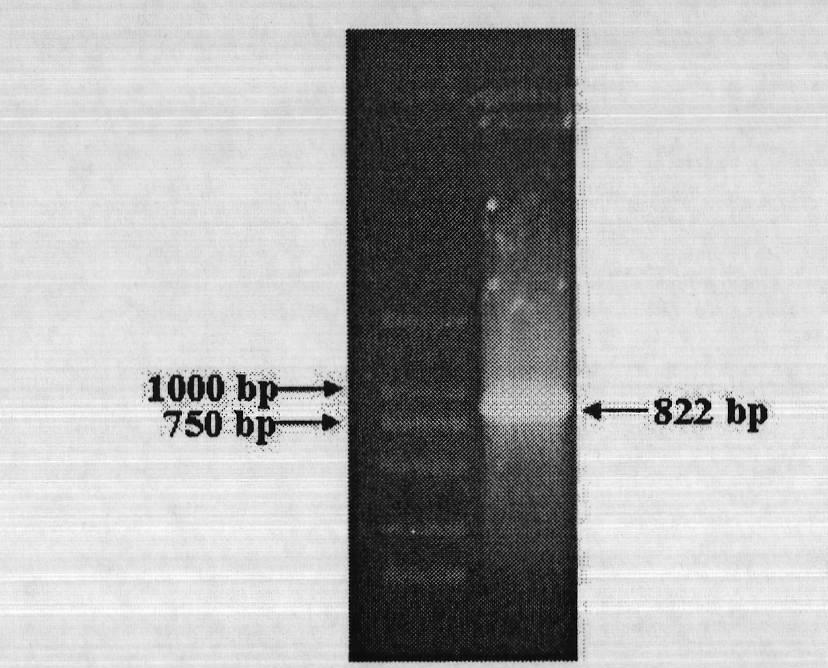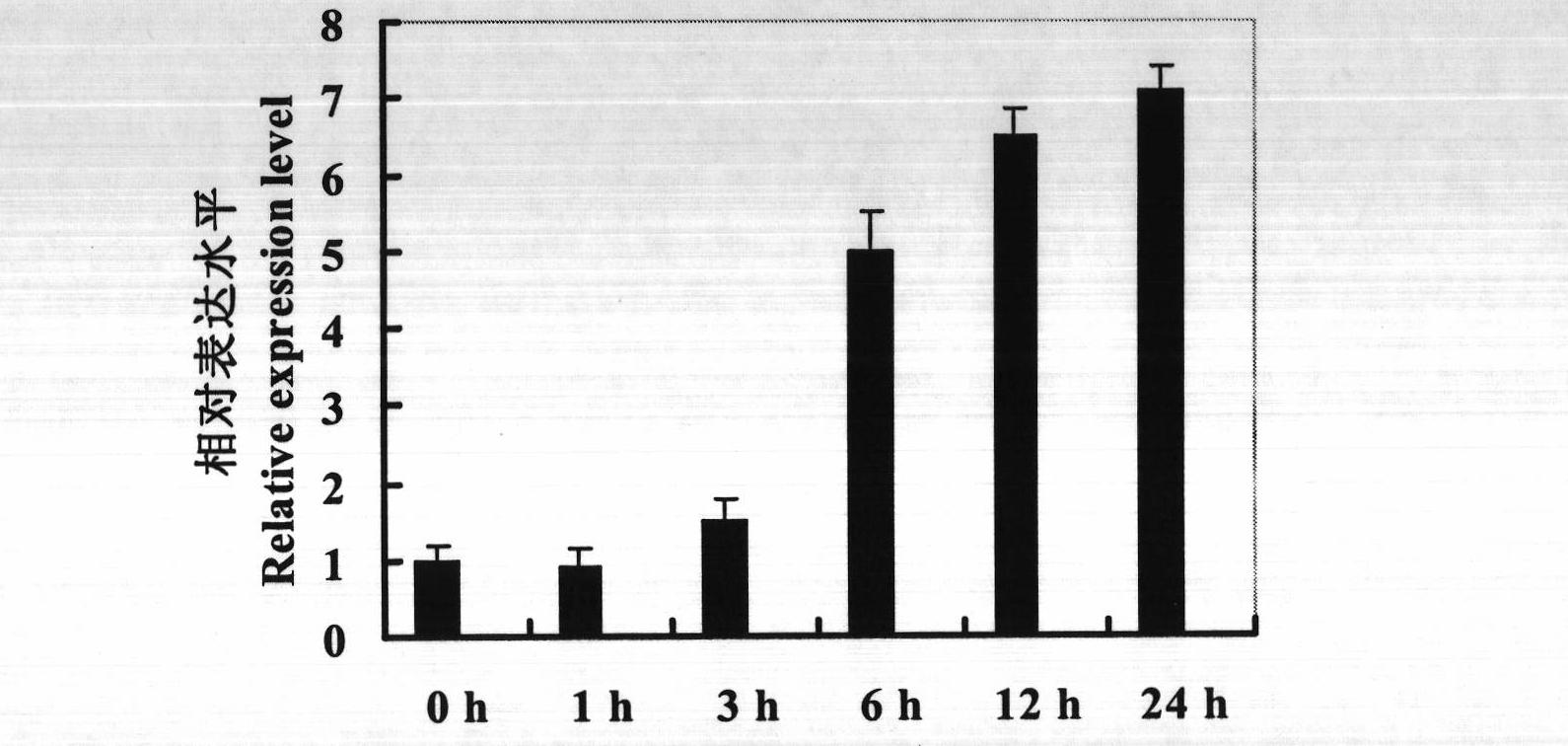Tobacco drought response gene NtRHF1 and application of encoding protein thereof
A protein-encoding and drought technology, applied in the field of plant genetic engineering, can solve the problems of inhibiting root growth, short plants, short internodes, etc., and achieve the effect of huge economic benefit potential and broad application prospects
- Summary
- Abstract
- Description
- Claims
- Application Information
AI Technical Summary
Problems solved by technology
Method used
Image
Examples
Embodiment 1
[0017] Embodiment 1: material drought stress treatment
[0018] The seeds of Yunyan 87 were sterilized by 15% sodium hypochlorite, placed in a petri dish containing distilled water, and cultivated in a light culture room with a temperature of 24-26°C, a humidity of 60%, and a light-dark cycle of 12h / 12h. When the seedlings grow to two leaves and one heart (about 14 days), the distilled water is poured out, and a 20% PEG 6000 solution stress treatment experiment is carried out. The treatment time was 1, 3, 6, 12, and 24 hours, respectively; the stress-treated tobacco was used as the experimenter, and the unstressed tobacco seedlings were used as the control group for the expression analysis of RHF1. The drought treatment of transgenic tobacco plants adopts artificial controlled watering method. When the plants grow to 5 leaves (about 30 days), stop watering for 14 days, and observe the growth of each strain.
Embodiment 2
[0019] Embodiment 2: Cloning of RHF1 (RING-H2 Finger 1) gene
[0020] 1. Synthesis of first-strand cDNA in tobacco leaves
[0021] The isolation and purification of total RNA from tobacco leaves were performed according to the instructions of the TRIZOL kit (Invitrogen, USA). Draw 1-2 μ g of the total RNA of tobacco leaves in a 1.5 ml centrifuge tube, according to the RevertAid of Fermentas company TM First Strand cDNA Synthesis Kit Product Description Perform reverse transcription to obtain the first strand cDNA of tobacco leaves.
[0022] 2. PCR amplification of NtRHF1 gene
[0023] Using the first-strand cDNA as a template, perform PCR amplification of the NtRHF1 gene to obtain a PCR amplification product.
[0024] The full-length cDNA primers of the tobacco NtRHF1 gene were designed according to the tobacco expressed sequence tag (Expressed Sequence Tag, EST) information in the website http: / / www.ncbi.nlm.nih.gov / :
[0025] Upstream primer: 5′-ATGAGTTTTGTTTTCCGAG-3′; ...
Embodiment 3
[0029] Example 3: Expression analysis of NtRHF1 gene
[0030] 1. In this example, the fluorescent quantitative RT-PCR method was used to analyze the expression of NtRHF1 gene under 20% PEG 6000 stress. The experimental samples were the tobacco leaves of the experimenter and the control group described in Example 1. In each sample, according to the method described in Example 2, 5 μg of total RNA was reverse-transcribed into first-strand cDNA as a template.
[0031] According to the full-length cDNA sequence of NtRHF1 gene, specific primers for fluorescent quantitative PCR were designed as follows:
[0032] Upstream primer: 5'-TTGGTGCTCGGTGTCTTCTTTAT-3';
[0033] Downstream primer: 5'-GTGCCCTCAGTGTTTCGTAATCT-3'.
[0034] BioRad iQ5 real-time quantitative PCR instrument was used for PCR amplification, and the amplified product was 244bp.
[0035] 2. For each sample, the upstream primer: 5'-TGGCATCACACTTTCTAAAC-3' and the downstream primer: 5'-CAACGGAATCTCTCAGCCCT-3' were use...
PUM
 Login to View More
Login to View More Abstract
Description
Claims
Application Information
 Login to View More
Login to View More - R&D
- Intellectual Property
- Life Sciences
- Materials
- Tech Scout
- Unparalleled Data Quality
- Higher Quality Content
- 60% Fewer Hallucinations
Browse by: Latest US Patents, China's latest patents, Technical Efficacy Thesaurus, Application Domain, Technology Topic, Popular Technical Reports.
© 2025 PatSnap. All rights reserved.Legal|Privacy policy|Modern Slavery Act Transparency Statement|Sitemap|About US| Contact US: help@patsnap.com



